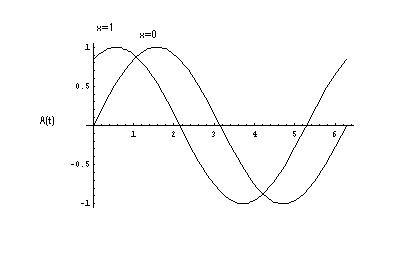Often when studying natural phenomena, the chemical and physical properties of various substances, and also when solving complex technical problems, one has to deal with processes, the characteristic feature of which is periodicity, that is, a tendency to repeat after a certain period of time. For the description and graphic representation of such a cyclical nature in science, there is a function of a special kind - a periodic function.
The simplest and most understandable example is the revolution of our planet around the Sun, in which the distance changing between them all the time obeys annual cycles. In the same way, the turbine blade returns to its place, having made a complete revolution. All such processes can be described by such a mathematical quantity as a periodic function. By and large, our whole world is cyclical. This means that the periodic function also occupies an important place in the human coordinate system.
The need for mathematical science in number theory, topology, differential equations, and exact geometric calculations led to the emergence in the nineteenth century of a new category of functions with unusual properties. They became periodic functions that take on identical values at certain points as a result of complex transformations. Now they are used in many branches of mathematics and other sciences. For example, when studying various vibrational effects in wave physics.
Different mathematical textbooks give different definitions of a periodic function. However, regardless of these discrepancies in the formulations, they are all equivalent, since they describe the same properties of the function. The simplest and most understandable may be the following definition. Functions, the numerical indicators of which are not subject to change, if we add to their argument a certain number other than zero, the so-called period of the function, denoted by the letter T, are called periodic. What does all this mean in practice?

For example, a simple function of the form: y = f (x) will become periodic if X has a certain period value (T). From this definition it follows that if the numerical value of a function with period (T) is defined at one of the points (x), then its value also becomes known at points x + T, x - T. An important point here is that for T equal to zero, the function turns into an identity. A periodic function can have an infinite number of different periods. In the bulk of cases, among the positive values of T, there is a period with the smallest numerical indicator. It is called the main period. And all other values of T are always multiple to him. This is another interesting and very important property for various fields of science.
The graph of a periodic function also has several features. For example, if T is the main period of the expression: y = f (x), then when plotting this function, it’s enough to just build a branch on one of the intervals of the length of the period, and then transfer it along the x axis to the following values: ± T, ± 2T , ± 3T and so on. In conclusion, it should be noted that not every periodic function has a main period. A classic example of this is the function of the German mathematician Dirichlet of the following form: y = d (x).